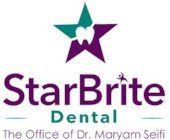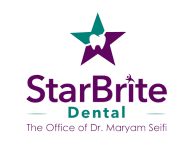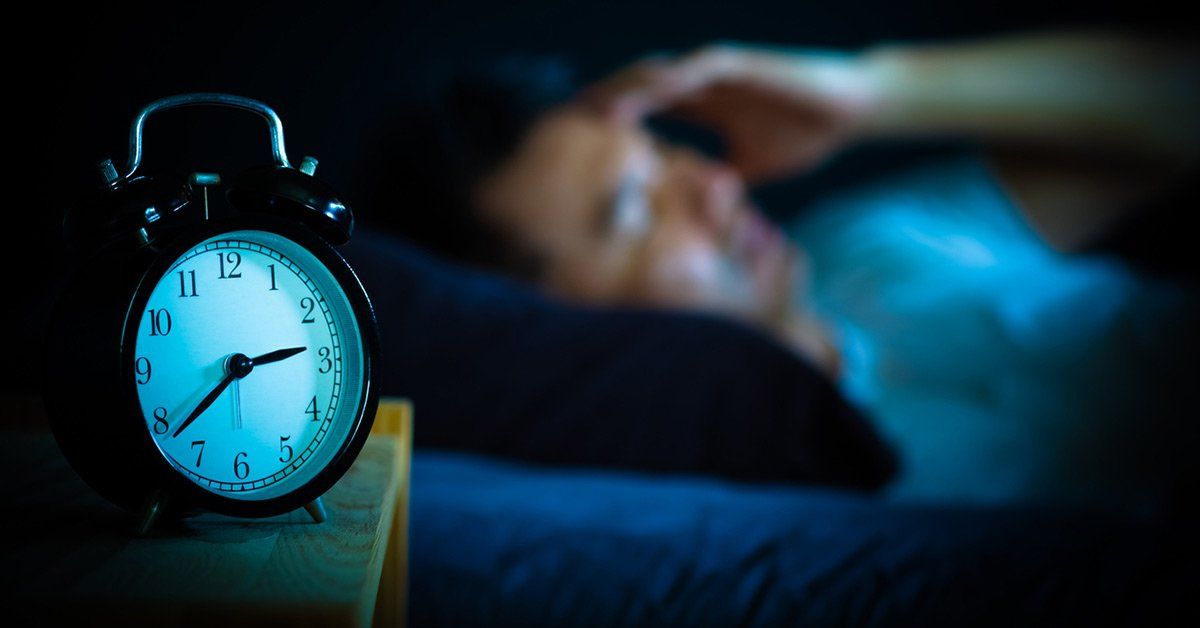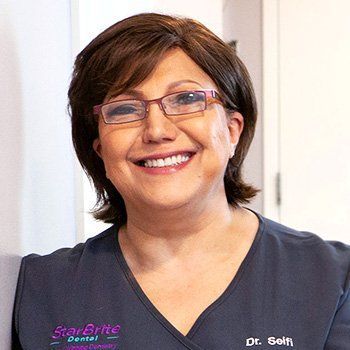Sleep Apnea
Sleep Apnea Symptoms
As many as 22 million Americans suffer from sleep apnea, which means that they are unable to draw sufficient oxygen into their lungs while they sleep. What makes this condition so serious is the fact that a person with sleep apnea can develop life-threatening health problems as a result of their oxygen shortage and the stress it causes.
It’s important to have an answer for “What is sleep apnea?” and know sleep apnea symptoms, causes and treatments. In this article, we will fully discuss this problem so you know if you should seek the help of a doctor or dentist.
What Is Sleep Apnea?
A person with sleep apnea stops breathing temporarily during sleep. This can happen hundreds of times a night. Each breathless episode can last for a full minute or even longer. The sleeper may gasp, partially wake, draw a deep breath and fall back to sleep. But then the gasping happens again minutes or even seconds later.
Most people with sleep apnea snore loudly. It may take someone else telling them that they are snoring or that they gasp in their sleep as they may be completely unaware of the problem.
There are three types of sleep apnea:
- Obstructive Sleep Apnea: Obstructive sleep apnea (also referred to as OSA), is the most prevalent type. The soft tissues in the back of the throat relax too much during sleep and this obstructs the airway. Or the person may have an oversized tongue or insufficient room in their lower jaw for their tongue. These problems cause the tongue to fall too far back in the throat where it obstructs the airway as the person sleeps. The person can’t draw enough air through the obstructed airway so struggles to breathe and partially wakes up.
- Central Sleep Apnea: Central sleep apnea happens when a person’s brain does not tell the body to breathe. A person with central sleep apnea might wake up feeling short of breath and may have trouble sleeping.
- Complex (or Mixed) Sleep Apnea: Complex sleep apnea exists when a person suffers from both central and obstructive sleep apnea.
Signs of Sleep Apnea
Because a person with sleep apnea may not know they suffer from this problem, they may have to watch for signs like these:
- Dry mouth
- Daytime tiredness and sleepiness
- Difficulty paying attention
- Irritability
- Headaches on awakening
- Jaw and tooth pain
- Sexual dysfunction
- Waking up gasping
- Loud snoring
A person with central sleep apnea may suffer from the signs above and the following:
- Reduced tolerance for exercise
- Insomnia
- Waking suddenly, short of breath
- Sitting up so they can breathe more fully
- Snoring, but not necessarily as heavily
With both types of sleep apnea, a key sign to look for is feeling unrested and fatigued on waking up.
Snoring alone is not necessarily a sign of sleep apnea. A person who snores may still feel rested when they awaken. In this case, they may not suffer from a shortage of oxygen during the night, despite the snoring.
There is also an association between sleep apnea and sleep-related bruxism (teeth-grinding). Bruxism can cause jaw and tooth pain, and worn-down teeth. It’s not known for sure if OSA causes bruxism or not. But many people suffer from both conditions at the same time.
If you suffer from the signs on the list above, you may be able to restore your restful sleep by
treating your sleep apnea. The first step is determining if you have sleep apnea and then which type of apnea you suffer from. Any contributing factors to sleep apnea should be addressed as you receive treatment directed at relieving the adverse effects of this condition.
When you start seeing the signs of sleep apnea, you should not delay diagnosis and treatment. Long periods spent suffering from this problem begin to damage a person’s health.
Obstructive Sleep Apnea Causes
The cause of sleep apnea depends, certainly, on the type of apnea a person suffers. While the primary cause of OSA is obstruction of the airway, there are several factors that increase a person’s chance of suffering from this problem. They are:
- Being overweight
- Having a thick neck
- Being male
- Age over 40
- Family history of sleep apnea
- Enlarged tonsils or adenoids
- Having allergies
Even though these conditions are typically associated with sleep apnea, it certainly happens that females who are not overweight and do not have thick necks (or other conditions on this list) may still be diagnosed with sleep apnea. One factor that increases the risk of sleep apnea in women is being past menopause. At this time of life, a woman’s risk of sleep apnea increases significantly.
Central Sleep Apnea
Central sleep apnea may be the result of health conditions such as heart failure, irregular heartbeat, stroke, brain tumor or other injury to the brain.
A person who travels to a very high altitude without time to acclimate may also suffer from central sleep apnea on a temporary basis.
All the causes of central sleep apnea are not yet known.
Additional Contributing Factors to Obstructive Sleep Apnea
Smoking. The inflammation caused by smoking can increase the risk of obstructive sleep apnea.
Nasal congestion. Some people have structural problems inside their nasal passages that make breathing difficult. People with this problem are more likely to develop obstructive sleep apnea.
Alcohol and certain
medications. These substances may worsen obstructive sleep apnea. Basically, any drug that relaxes the muscles at the back of the throat can make this condition worse. Drugs that tend to cause weight gain also can worsen it. These types of drugs include:
- Opioids
- Benzodiazepines
- Muscle relaxants
- Testosterone
- Antidepressants
- Anticonvulsants
Complications of Obstructive Sleep Apnea
OSA’s constant shortage of oxygen and the broken sleep stress a person’s body so severely that serious, life-threatening complications can develop.
Of course, the most common complication is feeling fatigued and sleepy during the day. A person may not be able to focus or concentrate which can make working and studying difficult, if not impossible. A tired, unfocused person is more likely to have accidents on the job or while driving. A student may fall asleep in class. Therefore, the ripple effects of sleep apnea extend far beyond just feeling tired.
Sleep apnea can also affect a person’s moods. A sufferer may become irritable, depressed and anxious.
The most serious OSA effects are on the cardiovascular system as a result of the low levels of oxygen in a person’s blood during sleep. Heart attacks, strokes, and hypertension are associated with sleep apnea.
Type 2 diabetes is also associated with sleep apnea. When breathing pauses, carbon dioxide levels in the blood increase. This sets up the person to suffer from insulin resistance which increases the level of sugar in the blood.
All these serious conditions can shorten a person’s life.
What to Do When you See Signs of Sleep Apnea
In the Washington, D.C., metropolitan area, Dr. Maryam Seifi has made an extensive study of sleep apnea causes and sleep apnea treatment. In conjunction with a medical doctor, she can help you determine if you suffer from this problem and work out the best treatment for you.
As soon as you notice changes in your daytime patterns like waking up unrefreshed, being more fatigued or needing naps, you might consider the possibility of sleep apnea. Starting to have a parched mouth every morning or being more irritable can also tip you off.
How to Treat Sleep Apnea
Two types of oral appliances are frequently used to treat obstructive sleep apnea. They are:
Mandibular Adjustment Device: This is a custom-made appliance that fits over the teeth and is worn while the patient sleeps. It is similar to a two-part sports guard. The top and bottom are joined by a hinged bar that is angled so it moves the lower jaw (the “mandible”) forward. This creates more room for the tongue and helps keep the airway open.- Tongue Stabilizing Device: This device looks somewhat similar to a baby’s pacifier. The right size of device will grip a patient’s tongue with suction and draw it away from the throat. This helps keep the airway open through the night.
These devices can help with cases of obstructive sleep apnea. They will not correct central sleep apnea which is far more rare.
More on Sleep Apnea Treatment
There are a few people that may need surgery to correct anatomical problems that interfere with their breathing during sleep. But most people get satisfactory results from less-invasive treatment. As with many conditions, if a person starts with less invasive treatments, they may be able to save themselves the pain, cost and inconvenience of surgery if the less invasive treatment resolves the situation.
Milder approaches to treatment, however, may not be successful for every person. Those patients who do not see success from sleep apnea appliances may need a CPAP machine to help them get enough oxygen at night. (CPAP stands for
continuous positive airflow pressure.)
A CPAP machine sends a steady, strong flow of air into the nostrils during sleep. The air is supplied by a tube leading to a quiet tabletop pump. The tube is attached to a strap that fits around the head. There are various types of fittings that cover the mouth and nose or just the nose. There is also a fitting that rests snugly under the nose.
Unfortunately, many people do not comply with their CPAP treatment. They are uncomfortable wearing the headgear required with a CPAP machine, they find using the machine unpleasant for various reasons or they find it difficult to sleep while wearing the CPAP equipment. Different studies have found that between 29% and 83% of CPAP patients do not manage to use the CPAP through a full night’s sleep. For that reason, simpler, more comfortable methods of sleep apnea treatment work for a patient and provide the benefit they need.
Sleep Apnea Solutions and Diagnostics
A few people may need oxygen supplementation during sleep. This is particularly important for a person with central sleep apnea. A person with central sleep apnea may also need treatment for underlying conditions, such as heart failure.
A person who is overweight and therefore has a thick neck may be able to improve his obstructive sleep apnea by losing weight. It is also helpful to manage one’s prescription drugs in coordination with one’s doctor, and to stop smoking. A person’s allergies may also need to be treated to reduce congestion and open the airway.
Diagnosing sleep apnea often requires an overnight sleep test. This kind of sleep study can be done in the patient’s own home once it is prescribed by a doctor. A more sophisticated test is required to diagnose central sleep apnea. This test must be done in a medical facility.
Never Overlook Sleep Apnea
Sleep apnea can be successfully treated so this problem should never be overlooked. If you, a spouse or other member of your household notices that you’re exhibiting sleep apnea symptoms, seek a diagnosis and treatment immediately. Every day you struggle to breathe at night, you create more stress on every system of your body.
It’s very smart to choose a doctor and dentist team that has extensive experience and study of this subject. An expert in treating sleep apnea has done much more than simply attend a few seminars on the subject.
Dr. Seifi, senior dentist at StarBrite Dental of Rockville, Maryland, has not only studied this subject deeply, she has treated many patients and seen the variables that occur. Drawing on her knowledge and experience, she provides sleep apnea sufferers with custom-designed
oral appliances that reduce or eliminate the underlying airway obstruction. By working in conjunction with medical doctors who diagnose sleep apnea, her wide experience enables her to resolve many sleep apnea cases.
With the right treatment, you can feel better every morning and more alert all day. You deserve a good night’s sleep and a brighter outlook all day. This can be your result if you see the right practitioner to get an accurate diagnosis and the right sleep apnea solution.
Sources:
https://www.sleepapnea.org/learn/sleep-apnea-information-clinicians/
https://www.sleepapnea.org/learn/sleep-apnea/
https://www.aafp.org/afp/1999/1115/p2279.html
https://www.sleepfoundation.org/sleep-apnea/link-between-sleep-apnea-and-teeth-grinding
https://www.mayoclinic.org/diseases-conditions/central-sleep-apnea/symptoms-causes/syc-20352109
https://www.mayoclinic.org/diseases-conditions/sleep-apnea/symptoms-causes/syc-20377631
https://www.sleepreviewmag.com/sleep-treatments/therapy-devices/cpap-pap-devices/top-10-practices-to-increase-cpap-compliance/
https://www.ncbi.nlm.nih.gov/pmc/articles/PMC5346880/
https://www.mayoclinic.org/diseases-conditions/sleep-apnea/diagnosis-treatment/drc-20377636



